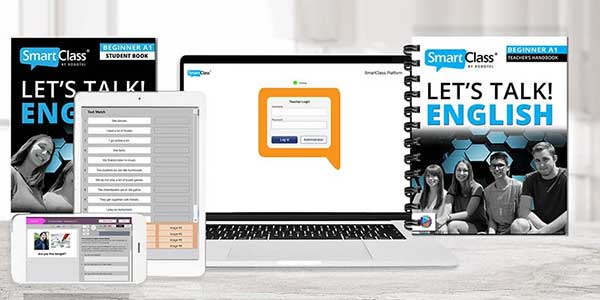Synchronous and asynchronous learning with SmartClass Hub
Never have the terms synchronous and asynchronous learning been discussed so much. But when COVID-19 hit the world, those words became two of the biggest buzzwords in education. Teachers, parents, and students alike are now trying to navigate the new worlds of in-person, hybrid, and online learning since March 2020. I want to briefly explain what the two terms mean and then dive into their importance for language teaching and learning. I will also describe why I believe the SmartClass platform is the best solution to go between synchronous and asynchronous learning phases because it gives students consistency while also strengthening their language skills.
Asynchronous learning
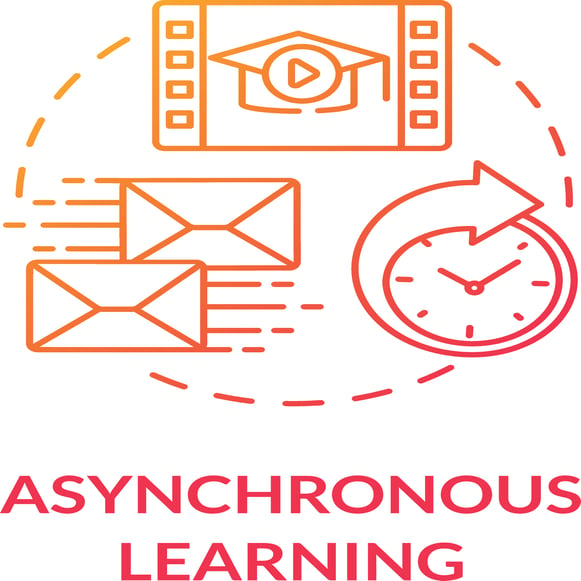
Both learning models occur online, not in person, with the big difference being WHEN you do your work. Asynchronous learning is a more flexible approach, with assignments, videos, and tests posted online. Students can complete those when it fits their schedule. There are still deadlines, but whether they do their work at 8 am or 11 pm, that's up to them. The same goes for teachers: As a teacher, you can prepare and post your lessons whenever you have time and grade and check in with your students whenever it works for you. Besides this flexibility, asynchronous learning also allows you, as a learner, to set your own pace. You decide when and how much you read and complete in a day. If you learn quickly, you can get done with classwork faster than if you had to wait for the rest of the class to complete assignments in an in-person or synchronous setting. If it takes you a little longer to retrieve information, and you like to review and reread texts, you can do that in an asynchronous environment without feeling the pressure of the rest of the class that wants to move on. You can take all the time you need to complete assignments. However, that is one of the disadvantages of asynchronous learning as well. Not everyone likes to work alone and is good at holding himself accountable. If you are a social person and need someone to keep you on track, asynchronous learning might not be right for you.
Synchronous learning
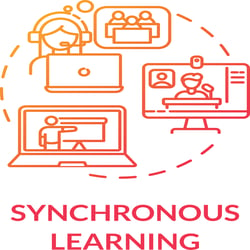
On the other hand, synchronous learning follows a set schedule of live meetings and live lectures or lessons instead of videos. Synchronous learning happens in real-time and requires students and teachers to be present in the same "virtual classroom" simultaneously.
It allows for interactions between students and teachers and is closest to in-person learning. Students can ask teachers questions and get immediate answers, while teachers can watch their students' work progress and observe them during assignments and tests and ask live questions to test their knowledge. The disadvantage of it is the lack of flexibility that the set schedule of live meetings, discussions, and debates brings with it. Wi-Fi or technology issues might also add to the stress of the synchronous learning experience.
Synchronous and asynchronous learning with SmartClass Hub
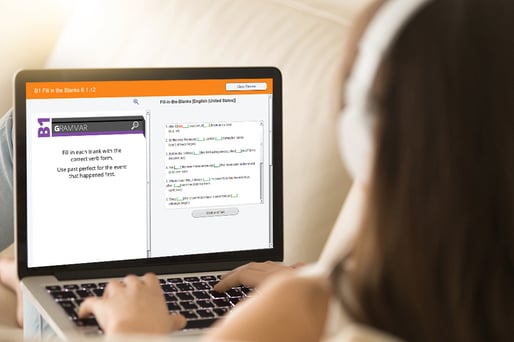
Ever since COVID-19 hit the world at the beginning of this year, teachers, schools, and districts have been trying to find the right platforms for synchronous, asynchronous, hybrid, or in-person learning. While some schools went back to "normal" after summer break, others had to find a solution for distance learning. I compared the SmartClass Hub to Google Classroom already in another blog post but want to focus solely on the Hub here to describe more details about, what I believe to be, the perfect solution for language teachers during their synchronous/asynchronous teaching.
The SmartClass Teaching Platform (Hub) is designed for teaching languages specifically, so all features support teachers and encourage students in their language learning. The software, which will be browser-based by the end of 2020, can be used anywhere, on any device, and at any time.
Language teachers can choose to create their own content or subscribe to one of three ready-to-use courses:
Let's Talk! English: A complete ESL curriculum designed by teachers for teachers, with over 2500 ready-to-use activities. Based on the CEFR language proficiency standards, this course is divided into four levels with 19 different types of activities, half of which are automatically graded by the SmartClass HUB software.
"Deutsch - Hörverstehen und Sprechen" is a supplemental German course that is focused on listening, speaking, and pronunciation activities. This course is already available for A1 and A2 levels, and the next levels will be available within the following year.
Español - Escuchar y Hablar: This is also a supplemental course to encourage students to speak, test their listening comprehension, and practice their pronunciation in Spanish.
But like I mentioned before, you can also easily create your own activities within the Hub, by choosing one of 20 activity templates.
How it works:
After either creating your own activities or choosing some of the many activities available in the Hub you organize them in folders and assign them to your students. Students will see their assigned activities in their dashboard and work on them individually. When finished, they submit them, and either you, the teacher, reviews and grades them. If it is one of the ten auto-graded activity types, it will be automatically graded by the software, and a grade will be posted for teachers and students to view. As a teacher, you always have the option to review the auto-graded activities and overwrite any grade the system assigns. You can also leave written or spoken feedback.
Why choose the SmartClass Hub for synchronous and asynchronous language teaching?
Most schools using the distance/virtual teaching approach have a combination of synchronous and asynchronous time. So, you might spend 3 hours a day during synchronous instruction with your students, whether in full or small groups, breakout rooms, or live meetings. The other hours of the students' day are asynchronous, meaning they work on assignments from home while you plan your next lessons, review work, or meet with other small groups or colleagues. The Hub allows you to prepare your activities in advance, organize them however it is best for your pacing and layout, and saves you time because of the ten different auto-graded activity types. You can teach your regular lesson during synchronous learning time and then assign activities for your students to complete during asynchronous time. You can also review and work on individual assignments in the Hub with students during your small group meetings or one-on-one support times and watch them complete an activity and offer support and help.
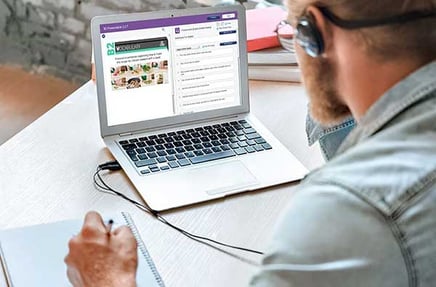
Especially in language classrooms, teachers need to be the language models for their students, and give students many chances to use their newly-acquired language skills and speak and talk in the foreign language they are learning. We already don't have enough time to do this in traditional in-person classes, let alone during tight meetings during virtual learning. The Hub allows students to specifically work on their listening comprehension and their pronunciation and speaking skills, with instant feedback for those pronunciation activities from AI. So not only does this allow for more interactive language learning during asynchronous times, but it also boosts your students' confidence in listening and speaking during synchronous times when they have had a chance to practice individually on their own.
In conclusion
With half of the activity templates being auto-graded, it frees up your valuable time to focus on your synchronous time together. It also gives you peace of mind that your students are spending their asynchronous time with meaningful and interactive activities that focus primarily on their listening and speaking skills. It supports a smooth transition from synchronous to asynchronous learning and helps teachers and students to be successful and productive during their (distance) learning journey.
